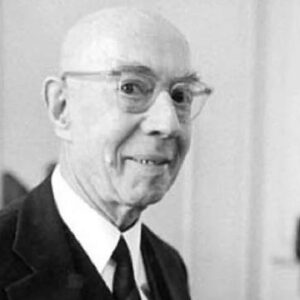Gustav Ludwig Hertz was a Nobel Laureate in Physics who pioneered research in the subject of inelastic electron collisions in gases. He became one of the most influential physicists of the twentieth century during a five-decade career. Gustav Ludwig Hertz made his most important discovery while working as a researcher at the University of Berlin, but his career was cut short when he was drafted into the army following the outbreak of World War I. Hertz returned three years later, picked up where he left off, and established himself as one of his generation’s most prominent scientists. Hertz, unlike many other scientists of his time, did not always work in academia and instead worked as a senior researcher for companies like Philips and Siemens. Hertz was persecuted by the Nazi Party in Germany because of his Jewish origin when his career was at its pinnacle, so he fled to the Soviet Union to play a key role in their nuclear development. He did, however, return to Germany and resume his career as a leading scientist.
Childhood and Adolescence
Gustav Ludwig Hertz was born in Hamburg, Germany, on July 22, 1887, to Gustav Theodor Hertz and Auguste Hertz. Gustav Ludwig Hertz’s father was a lawyer, while his uncle Heinrich Hertz was a distinguished scientist.
Gustav Ludwig Hertz had his early education at the Johanneum School in Hamburg, his hometown. In 1906, he received his diploma from the institution.
Gustav Ludwig Hertz began his studies at the University of Gottingen in 1906, but a year later transferred to the University of Munich and then to the University of Berlin, where he got his doctorate in 1911.
Gustav Ludwig Hertz began working at the University of Berlin in 1911 and was assigned as a research assistant in the university’s physics department two years later.
Gustav Ludwig’s Career
Gustav Ludwig Hertz began working at the University of Berlin in 1911, and for the next three years, he worked on inelastic electron collisions alongside James Franck. The Nobel Prize in Physics was awarded to Hertz and Franck 14 years after they began working on the subject.
Gustav Ludwig Hertz served in the military during the First World War. He began in 1914, but was wounded in combat the following year, and after three years in the service, he returned to Germany. He was appointed Privatdozent (researcher and instructor) at the University of Berlin upon his return.
In 1920, the Philips Incandescent Lamp Factory in Eindhoven, Netherlands, needed a researcher, and Hertz was hired in the same year. Before returning to academia, he spent five years at Philips.
Gustav Ludwig Hertz was hired as a professor and the director of the Physics Institute at the Martin Luther University of Halle-Wittenberg in 1925. He became the director of the Berlin Technische Hochschule (BTHPhysics )’s Institute in Berlin-Charlottenburg in 1928. Hertz first proposed his isotope separation process during his time in Berlin.
Gustav Ludwig Hertz was compelled to leave his employment at the Institute of Charlottenburg Technological University in Berlin in 1934 owing to his Jewish origin and instead took a post as a researcher with Siemens after the Nazi party came to power in Germany.
Hertz relocated to Russia in 1945, using the connections of his colleagues, and became the director of the Institute G, which was involved in the Soviet nuclear program. Hertz became one of the most prominent figures in the Soviet nuclear project during his decade in the Soviet Union, and his efforts were recognized by the Russian authorities.
Hertz returned to Germany in 1955 and worked as a professor at the University of Leipzig before becoming head of the German Democratic Republic’s physical society.
His Major Projects
In his early academic life, Gustav Ludwig Hertz focused on inelastic electron collisions in gases, which was the most important work of his career. These tests were carried out in conjunction with James Franck and are known as James-Franck experiments.
Achievements and Awards
In 1925, Gustav Ludwig Hertz and James Franck shared the Nobel Prize in Physics for their groundbreaking work on inelastic electron collisions in gases.
In 1951, he was awarded the Max Planck Medal.
Personal History and Legacy
In 1919, Gustav Ludwig Hertz married Elle Dihlmann, and the couple produced two sons named Carl Helmut Hertz and Johannes Heinrich Hertz. His two kids both went on to be physicists. In 1941, Elle Dihlmann passed away.
Gustav Ludwig Hertz died in Berlin on October 30, 1975, at the age of 88.
Estimated Net worth
Gustav is one of the wealthiest computer scientists and one of the most well-known. Gustav Ludwig Hertz’s net worth is estimated to be $1.5 million, according to Wikipedia, Forbes, and Business Insider.


